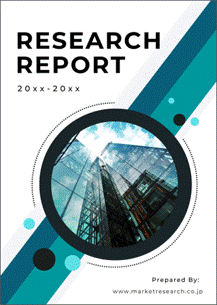 | • レポートコード:D0-MOR-AP0095 • 出版社/出版日:Mordor Intelligence / 2020年4月20日 • レポート形態:英文、PDF、105ページ • 納品方法:Eメール(受注後2-3営業日) • 産業分類:農業 |
| Single User | ¥629,000 (USD4,250) | ▷ お問い合わせ |
| Team User | ¥703,000 (USD4,750) | ▷ お問い合わせ |
| Corporate License | ¥1,110,000 (USD7,500) | ▷ お問い合わせ |
• お支払方法:銀行振込(納品後、ご請求書送付)
レポート概要
| 本調査レポートは、農業における人工知能の世界市場について調査・分析した資料で、農業における人工知能の市場概要、動向、セグメント別市場規模、地域別分析、競争状況、企業情報、市場機会分析などで構成されています。 |
The global Artificial Intelligence in agriculture market is witnessing a CAGR of 26.2% during the forecast period (2019-2024).
– Maximize crop yield using machine learning technique is driving the market. Species selection is a tedious process of searching for specific genes that determine the effectiveness of water and nutrients use, adaptation to climate change, disease resistance, as well as nutrients content or a better taste. Machine learning, in particular, deep learning algorithms, take decades of field data to analyze crops performance in various climates and based on this data one can build a probability model that would predict which genes will most likely contribute a beneficial trait to a plant.
– Increase in the adoption of cattle face recognition technology is driving the market. Through the application of advanced metrics, including cattle facial recognition programs and image classification incorporated with body condition score and feeding patterns, dairy farms are now being able to individually monitor all behavioral aspects in a group of cattle.
– However, lack of standardization is restraining the market growth as lack of standards in data collection, and lack of data sharing is high, and machine learning and artificial intelligence and advanced algorithm design have moved so fast, but the collection of well-tagged, meaningful agricultural data is way behind.
Key Market Trends
Labor Shortage and Increasing Costs of Labor to Drive the Artificial Intelligence Market
Across the world, a huge decline of the workforce is observed due to many reasons, like the lack of skilled labor, aging of farmers, and young farmers finding farming an unattractive profession, thus encouraging trends for automated farming operations. According to the International Labor Organization(ILO), agricultural labors in the percentage of the workforce declined from 81% to 48.2% in developing countries. Also, developed countries are not an exception in such a huge decline. Asia-Pacific, where agriculture occupies a major part of the economy, has a huge decline in workforce, which was nearly about 9% from 2015 to 2017. In Japan, the number of people working in farms witnessed a steep fall to 1.7 million in the year 2015, a 15% decline from the previous year.
The European agriculture sector has also faced such a huge decline in the workforce, which is nearly accounting to 12.8% for the corresponding period. The trend of decline in the agricultural workforce is encouraging government and private organizations to focus on automation operations by adopting artificial intelligence technologies in the agriculture sector. Owing to the above factors, the market for artificial intelligence in the agricultural sector is likely to boom in the years to come.
China’s Technological Innovations to Accelerate the Agriculture Sector
The technological innovations pertaining to the Chinese market, are also accelerating the growth and transforming the global artificial intelligence market in the agriculture sector. For instance, McFly’s Intelligent agricultural monitoring drone, GAGO’s large scale application of AI technology in crop production and livestock farming, and UniStrong’s “Huinong” Beidou navigation agricultural automatic driving system are few recent innovations prevailing in the Chinese Ai sector. Additionally, few technological giants have also begun to make deployment in the agricultural sector. For instance in the year 2018, JD.com’s “Jing Dong Farm” has made its debut, similarly in June 2018, Alibaba’s Et agricultural brain has been launched. Thus, increasing innovation in the Chinese AI sector is likely to further boost the adoption of AI in the agriculture in the coming future.
Competitive Landscape
The AI market in agriculture is fragmented, as a number of players supplying the same product on lower-cost make market competition stiff. Also, technological advancements by players and the high presence of local and regional players pose a major threat in a price-sensitive market. Key players are Microsoft Corp., IBM Corp. (NITI Aayog), Agribotix LLC, etc.
May 2019 – XAG, a Chinese firm, presented its innovative solutions of combining drones with AI and IoT technology to achieve precision agriculture and induce transformational changes to the food system in 3rd AI for Good Global Summit, in Geneva. XAG is driving AI-powered intelligent devices such as drones and sensors to establish digital farming infrastructure in rural areas and enable precision agriculture which, for example, accurately targets pesticides, seeds, fertilizers, and water to wherever it is needed.
Reasons to Purchase this report:
– The market estimate (ME) sheet in Excel format
– Report customization as per the client’s requirements
– 3 months of analyst support
1 INTRODUCTION
1.1 Study Deliverables
1.2 Study Assumptions
1.3 Scope of the Study
2 RESEARCH METHODOLOGY
3 EXECUTIVE SUMMARY
4 MARKET DYNAMICS
4.1 Market Overview
4.2 Introduction to Market Drivers and Restraints
4.3 Market Drivers
4.4 Market Restraints
4.5 Industry Attractiveness – Porter’s Five Force Analysis
4.5.1 Threat of New Entrants
4.5.2 Bargaining Power of Buyers/Consumers
4.5.3 Bargaining Power of Suppliers
4.5.4 Threat of Substitute Products
4.5.5 Intensity of Competitive Rivalry
5 MARKET SEGMENTATION
5.1 Application
5.1.1 Weather Tracking
5.1.2 Precision Farming
5.1.3 Drone Analytics
5.2 Deployment
5.2.1 Cloud
5.2.2 On-Premise
5.2.3 Hybrid
5.3 Geography
5.3.1 North America
5.3.1.1 US
5.3.1.2 Canada
5.3.1.3 Mexico
5.3.1.4 Rest of North America
5.3.2 Europe
5.3.2.1 Germany
5.3.2.2 UK
5.3.2.3 Italy
5.3.2.4 Spain
5.3.2.5 Rest of Europe
5.3.3 Asia Pacific
5.3.3.1 China
5.3.3.2 Japan
5.3.3.3 India
5.3.3.4 Australia
5.3.3.5 Rest of Asia-Pacific
5.3.4 South America
5.3.4.1 Brazil
5.3.4.2 Argentina
5.3.4.3 Rest of South America
5.3.5 Rest of the World
6 COMPETITIVE LANDSCAPE
6.1 Vendor Market Share
6.2 Most Adopted Strategies
6.3 Company Profiles
6.3.1 Microsoft Corporation
6.3.2 IBM Corporation
6.3.3 Granular, Inc.
6.3.4 aWhere, Inc.
6.3.5 Prospera Technologies Ltd.
6.3.6 Gamaya SA
6.3.7 ec2ce
6.3.8 PrecisionHawk Inc.
6.3.9 Cainthus Corp.
6.3.10 Tule Technologies Inc.
7 MARKET OPPORTUNITIES AND FUTURE TRENDS